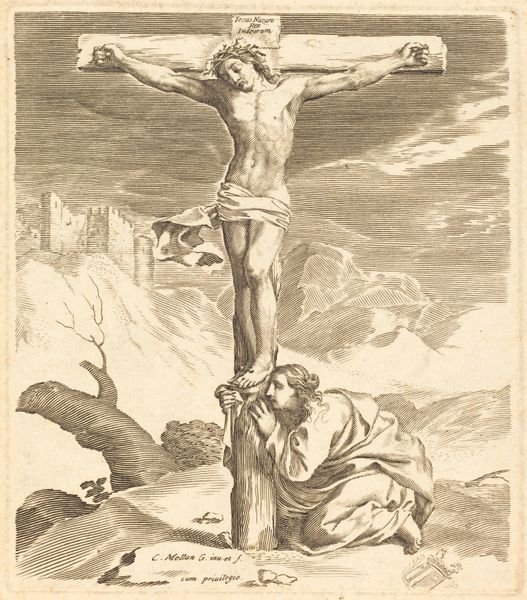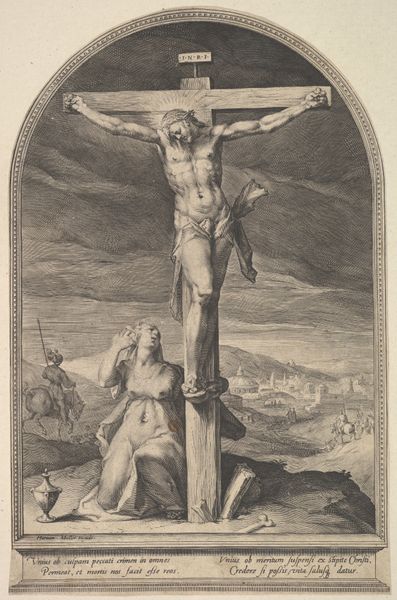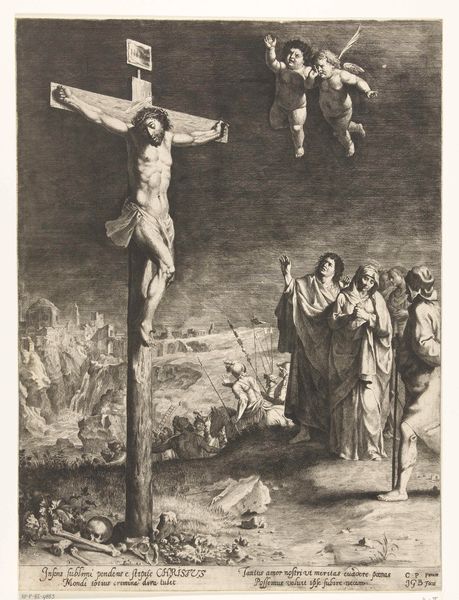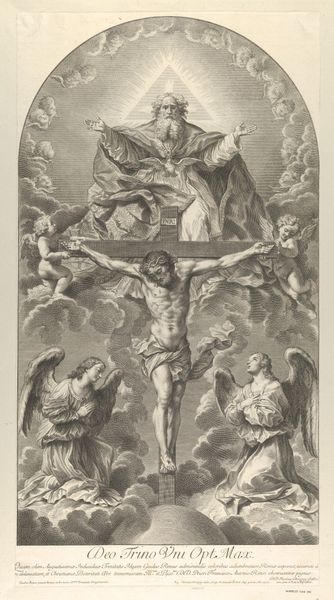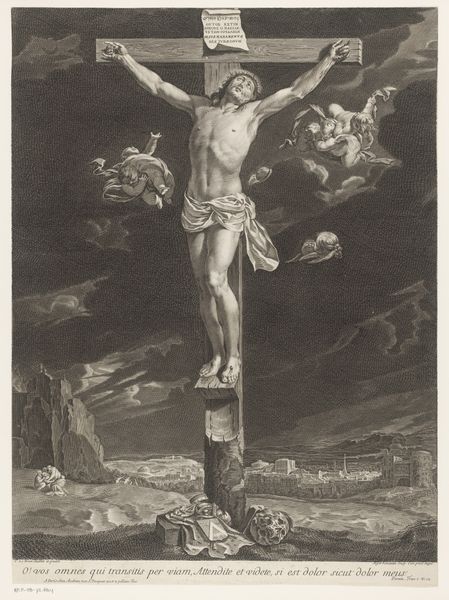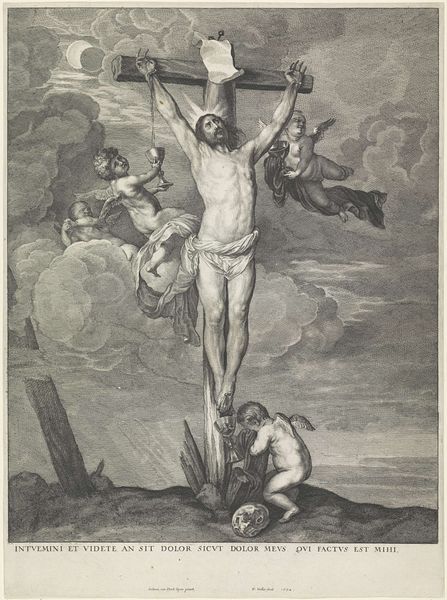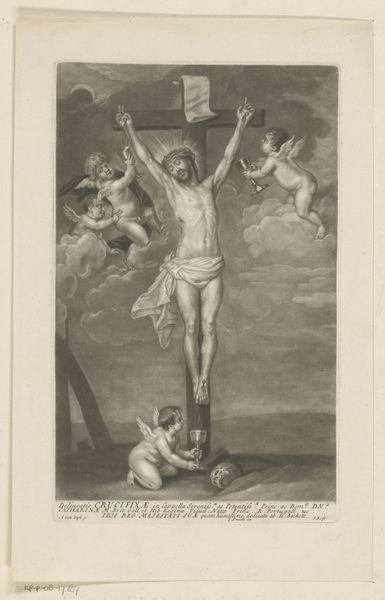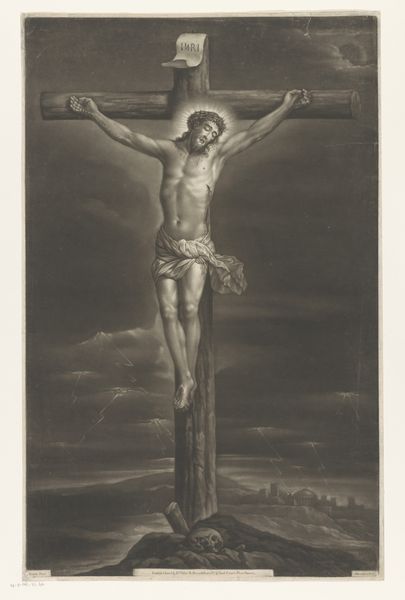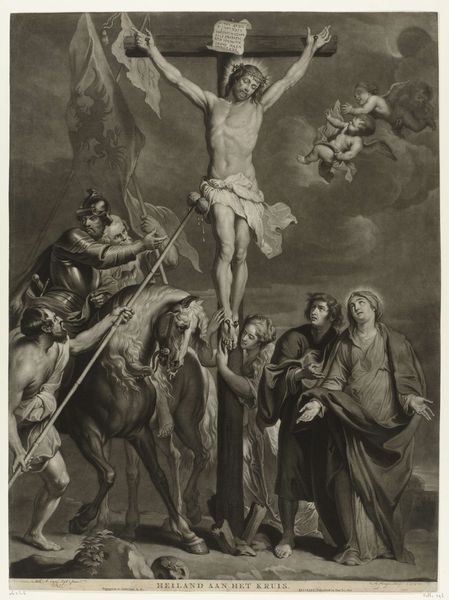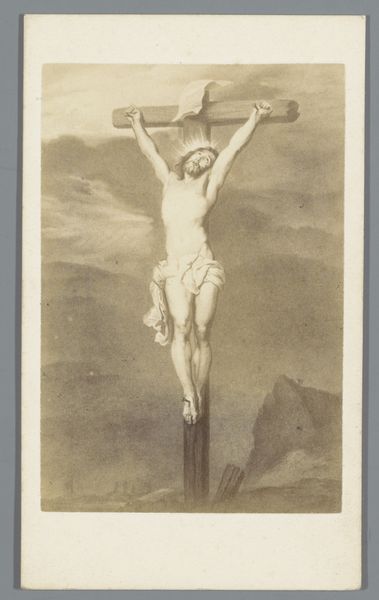
print, etching
#
baroque
# print
#
etching
#
old engraving style
#
figuration
#
history-painting
Dimensions: height 504 mm, width 373 mm
Copyright: Rijks Museum: Open Domain
Editor: Here we have François Chauveau’s etching, *Christus aan het kruis,* dating back to somewhere between 1641 and 1653. I'm struck by the drama of it all. The sky's turbulent, and the figures at the foot of the cross seem overwhelmed. How would you interpret this work, considering its place within art history? Curator: Well, Chauveau was working in a period heavily shaped by religious and political upheaval. Images like these weren't just devotional; they played a role in shaping public sentiment, especially in the context of the Counter-Reformation. The intense emotion you see isn’t accidental. The composition – the dramatic clouds, the expressive figures, and the idealized Christ – serves to involve the viewer emotionally in the scene. Consider who this print was made *for*. Not the church, but for personal devotionals for the burgeoing merchant class. Does that impact the purpose in your eyes? Editor: It definitely adds a layer. Knowing that this wasn’t exclusively for religious institutions changes my perspective. Were prints like these commonly used as propaganda, then? Curator: Propaganda is perhaps a strong word, but certainly, the imagery was carefully crafted to promote specific beliefs and values, functioning almost as visual sermons readily available within the growing print market. It's interesting to note how the figures’ expressions and postures mirror those in paintings of the same subject at the time. How does knowing it's an etching rather than a painting impact how you interpret the imagery's reach and effect on period viewers? Editor: That's insightful! Thinking about it, prints were more accessible and portable than paintings, multiplying the artwork's potential social influence. I hadn’t fully considered the scale of that. Curator: Exactly. And by understanding that context, we appreciate how much a single artwork could shape perceptions and reinforce particular ideologies in society at that time. Editor: This really emphasizes how important it is to look at art as part of a broader historical landscape. Thanks! Curator: Absolutely. Analyzing art in context allows us to understand how it actively participated in shaping historical moments, rather than simply reflecting them.
Comments
No comments
Be the first to comment and join the conversation on the ultimate creative platform.
